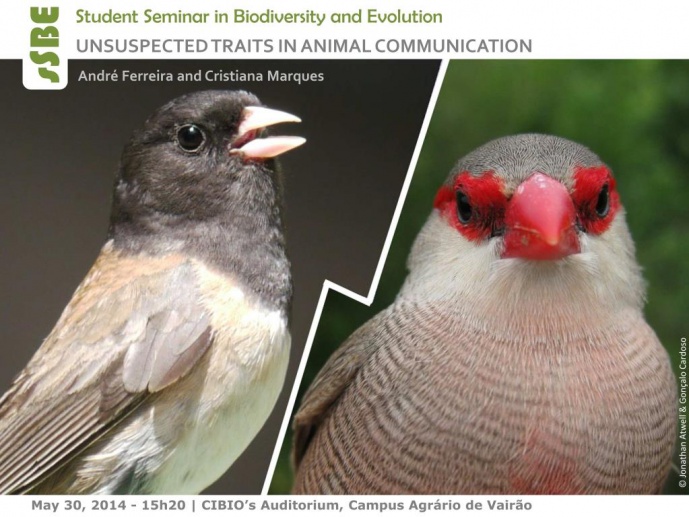UNSUSPECTED TRAITS IN ANIMAL COMMUNICATION

STUDENT SEMINAR IN BIODIVERSITY AND EVOLUTION

Most explanations for reliable communication are based on costs of signals. A recent suggestion is that signalling exposes mistakes that provide cues on individual quality, thus contributing to make communication reliable even if signal design is not costly. We describe several atypical traits in the songs of dark-eyed juncos (Junco hyemalis) that can be mistakes during song production or development. Some of these mistakes were more frequent in younger males and were negatively related to reproductive success, supporting the hypothesis that fewer mistakes indicate individual quality.
André graduated in Biology from the University of Coimbra and last year did an internship at CIBIO-InBIO. He is currently doing the MSc in Biodiversity, Genetics and Evolution in the Behavioural Ecology Group at CIBIO-InBIO.
Pigmentation patters aid in camouflage, because they are more difficult to locate and track by predators, while sexual signals are usually conspicuous and compromise camouflage. Nonetheless, one type of pigmentation pattern, avian barred plumage, may simultaneously function in sexual signalling because the regularity of pigmentation across feathers could indicate plumage condition. Using the common waxbill (Estrilda astrild), we show for the first time that the regularity of barred plumage is related to body condition. Also, adult males had more regular pigmentation than females or juveniles, as typical of signals that evolve by sexual selection.
Cristiana is finishing her BSc in Biology at the University of Porto, and an internship at the Behavioural Ecology Group at CIBIO-InBIO. Her research interests include sexual selection and ornamentation, as well as passerine ecology and behaviour.
Image credits: Jonathan Atwell & Gonçalo Cardoso